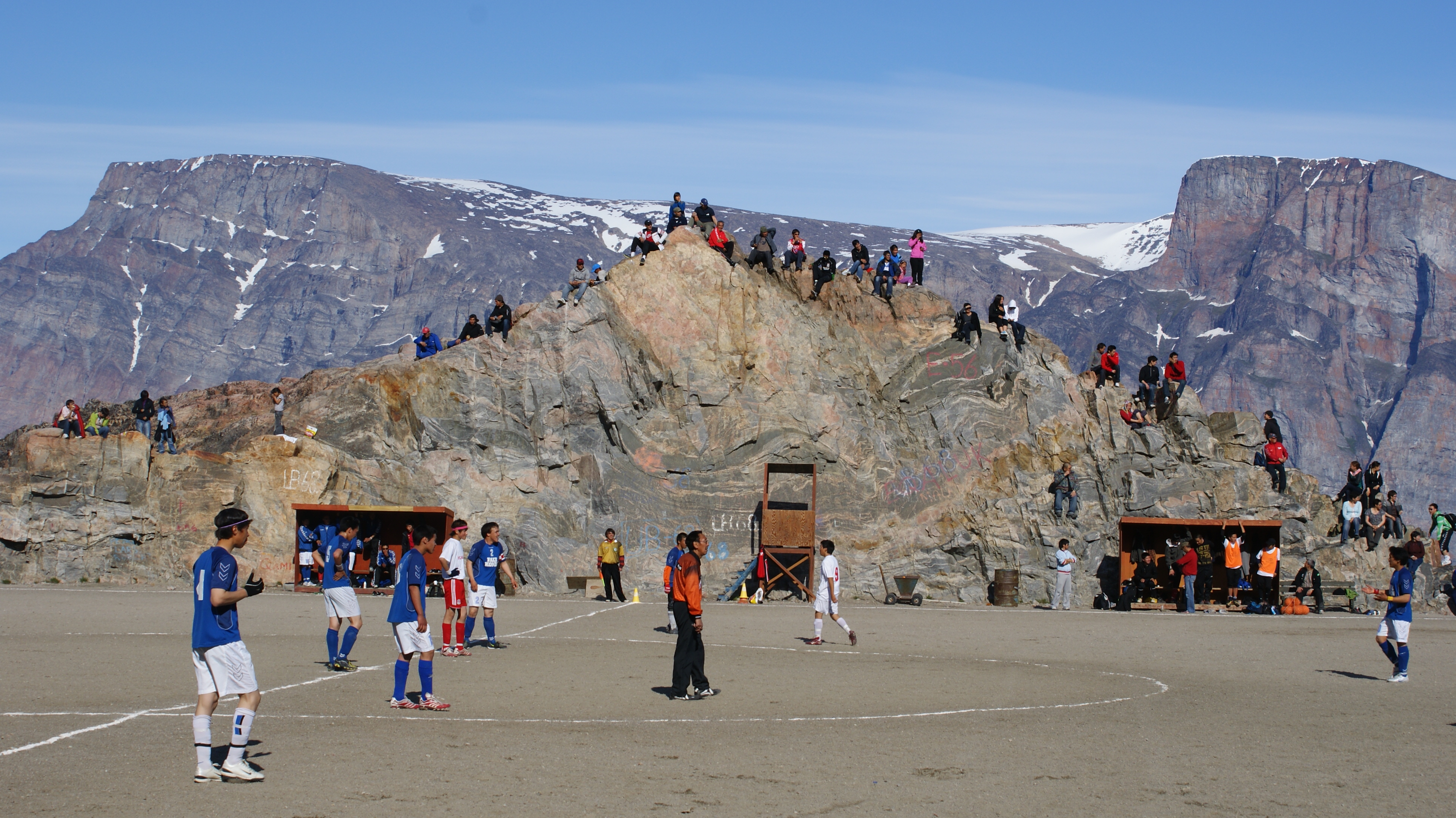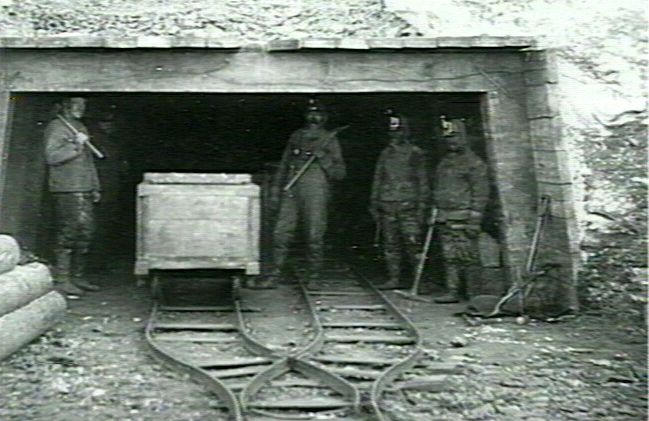|
Nuussuaq Peninsula
Nuussuaq Peninsula (, old spelling: ''Nûgssuaq'') is a large (180x48 km) peninsula in western Greenland. Geography The waters around the peninsula are that of Baffin Bay. To the south and southwest the peninsula is bounded by Disko Bay, an inlet of Baffin Bay. It is separated from Qeqertarsuaq Island by Sullorsuaq Strait which connects Disko Bay with Baffin Bay. To the northeast, it is bounded by the Uummannaq Fjord system. The peninsula is mountainous, with the highest summit reaching 2,144 m.Nuussuaq, Saga Map, Tage Schjøtt, 1992 The spinal range splits in two to the northwest of the base of the peninsula, with the southern arm forming the coastal range, the central arm almost entirely glaciated, and continuing northwest the entire length of the peninsula. The two arms are dissected by a deep Kuussuaq Valley, partially filled in the center with Sarqap Tassersuaq, a glacial, emerald lake. History Archaeological excavations in Qilakitsoq on the southwestern shore ... [...More Info...] [...Related Items...] OR: [Wikipedia] [Google] [Baidu] |
Uummannaq
Uummannaq is a town in the Avannaata municipality, in central-western Greenland. With 1,407 inhabitants in 2020, it is the eighth-largest town in Greenland, and is home to the country's most northerly ferry terminal. Founded in 1763 as Omenak, the town is a hunting and fishing base, with a canning factory and a marble quarry. In 1932, the Universal Greenland-Filmexpedition with director Arnold Fanck released the film '' S.O.S. Eisberg'' near Uummannaq. Geography Uummannaq is located 590 kilometres north of the Arctic Circle on Uummannaq Island located in the south-central arm of the Uummannaq Fjord. ''Uummannaq'' is also the general name given to the series of inlets north of the promontory at Niaqornat on the Nuussuaq Peninsula. Uummannaq Mountain The island is also home to Uummannaq Mountain, rising very sharply to the height of 1170m. Climbing it requires technical skills. Transport Air Greenland operates helicopter services to Qaarsut Airport from Uummannaq Heliport. ... [...More Info...] [...Related Items...] OR: [Wikipedia] [Google] [Baidu] |
Couloir
A ''couloir'' (, "passage" or "corridor") is a narrow gully with a steep gradient in a mountainous terrain.Whittow, John (1984). ''Dictionary of Physical Geography''. London: Penguin, p. 121. . Geology A couloir may be a seam, scar, or fissure, or vertical crevasse in an otherwise solid mountain mass. Though often hemmed in by sheer cliff walls, couloirs may also be less well-defined, and often simply a line of broken talus or scree ascending the mountainside and bordered by trees or other natural features. Couloirs are especially significant in winter months when they may be filled in with snow or ice, and become much more noticeable than in warmer months when most of the snow and ice may recede. These physical features make the use of couloirs popular for both mountaineering and extreme skiing Extreme skiing is performed on long, steep (typically from 45 to 60+ degrees, or grades of 100 to 170 percent) slopes in mountainous terrain. The French coined the term 'Le Ski Ext ... [...More Info...] [...Related Items...] OR: [Wikipedia] [Google] [Baidu] |
Qeqertaq
Qeqertaq (according to the old spelling ''K'eĸertaĸ'') is a settlement in the Avannaata municipality in western Greenland, located on an island off the southern shore of the Nuussuaq Peninsula in an inlet of Sullorsuaq Strait. Founded in 1830 as Øen, the settlement had 114 inhabitants in 2020. History Archaeological finds of stone tools have been made in Qeqertaq, which suggest that the site was inhabited long before the colonial era. In 1793, a house with 21 residents was recorded. In 1799, a line-fishing venture was started on the island. Later, in 1805 the venture was abandoned, along with the island. After the Gunboat War ended in 1814, twelve people lived in Qeqertaq again. The number of inhabitants continued to increase and in 1825 there were already several houses in the village. Qeqertaq became a winter udsted, a small trading post where skins and lard were exchanged for European goods, around 1830, and in 1845 became a year-round udsted. In 1915, Qeqertaq had ... [...More Info...] [...Related Items...] OR: [Wikipedia] [Google] [Baidu] |
Saqqaq
Saqqaq (old spelling: ''Sarqaq'') is a settlement in the Avannaata municipality in western Greenland. Founded in 1755 as Solsiden, Saqqaq had 132 inhabitants in 2020. The village's Kalaallisut name is a translation of the Danish meaning "Sunny Side", in reference to its position relative to Livets Top. It is the site name for the Saqqaq culture. Geography It is located in the southwestern part of the Nuussuaq Peninsula, on the northern shore of Sullorsuaq Strait, northwest of Ilulissat. Immediately northeast of Saqqaq is the Livets Top mountain (1150 m). History Archaeological excavations in Qilakitsoq on the other side of Nuussuaq Peninsula on the shores of Uummannaq Fjord revealed the existence of an ancient Arctic culture, later named the Saqqaq culture, which inhabited the area of west-central Greenland between 2500 BCE and 800 BCE. Recent DNA samples from human hair suggest that the ancient Saqqaq people came from Siberia about 5,500 years ago and independent of the ... [...More Info...] [...Related Items...] OR: [Wikipedia] [Google] [Baidu] |
Niaqornat
Niaqornat (Kalaallisut: "head-shaped") is a settlement in the Avannaata municipality in northwestern Greenland. The settlement is located on the northern coast of the Nuussuaq Peninsula, with a wide view over Uummannaq Fjord.Nuussuaq, Saga Map, Tage Schjøtt, 1992 It had 35 inhabitants in 2020. Economy Fishing Fishing is the mainstay of the economy, with stocks of Atlantic cod, Greenland halibut and Greenland shark. A variety of mammal species are harvested: ringed seal, bearded seal, harp seal, hooded seal, and walrus. There is a seasonal catch of narwhal and beluga – on rare occasions pilot whales are caught. Capelin and fin whales have been observed at Niaqornat as late as in November in recent years. Like other settlements in northwestern Greenland, Niaqornat experiences the effects of global warming. Hunting During spring a few polar bears are shot for meat. The catch includes reindeer, caribou, Arctic hare, grouse and various seabirds. Niaqornat represents a trad ... [...More Info...] [...Related Items...] OR: [Wikipedia] [Google] [Baidu] |
Qaarsut
Qaarsut (old spelling: ''Kaersut'') is a settlement in Avannaata municipality, in northwestern Greenland. It is situated on the northeastern shore of the Nuussuaq Peninsula. It had 174 inhabitants in 2020. History The first coal mine in Greenland operated between 1778 and 1924 in Qaarsuarsuit. Transport Qaarsut Airport, located to the northwest of the settlement, serves both Qaarsut and Uummannaq, the latter accessible only by helicopter. Population The population of Qaarsut has dropped by over 18 percent relative to the 2000 levels, reflecting a general trend in the region.Statistics Greenland Gallery [...More Info...] [...Related Items...] OR: [Wikipedia] [Google] [Baidu] |
Inoceramus
''Inoceramus'' (Greek: translation "strong pot") is an extinct genus of fossil marine pteriomorphian bivalves that superficially resembled the related winged pearly oysters of the extant genus '' Pteria''. They lived from the Early Jurassic to latest Cretaceous.''Inoceramus'' at Fossilworks.orgWard ''et al.'' "Ammonite and inoceramid bivalve extinction patterns in Cretaceous/Tertiary boundary sections of the Biscay region (southweste ... [...More Info...] [...Related Items...] OR: [Wikipedia] [Google] [Baidu] |
National Museum Of Denmark
The National Museum of Denmark (Nationalmuseet) in Copenhagen is Denmark's largest museum of cultural history, comprising the histories of Danish and foreign cultures, alike. The museum's main building is located a short distance from Strøget at the center of Copenhagen. It contains exhibits from around the world, from Greenland to South America. Additionally, the museum sponsors SILA - The Greenland Research Center at the National Museum of Denmark to further archaeological and anthropological research in Greenland. The museum has a number of national commitments, particularly within the following key areas: archaeology, ethnology, numismatics, ethnography, natural science, conservation, communication, building antiquarian activities in connection with the churches of Denmark, as well as the handling of the Danefæ (the National Treasures). Exhibitions The museum covers 14,000 years of Danish history, from the reindeer-hunters of the Ice Age, Vikings, and works of religious ... [...More Info...] [...Related Items...] OR: [Wikipedia] [Google] [Baidu] |
Saqqaq Culture
The Saqqaq culture (named after the Saqqaq settlement, the site of many archaeological finds) was a Paleo-Eskimo culture in southern Greenland. Up to this day, no other people seem to have lived in Greenland continually for as long as the Saqqaq. Timeframe The earliest known archaeological culture in southern Greenland, the Saqqaq existed from around 2500 BCE until about 800 BCE.Saqqaq culture profile — from the Greenland Research Centre at the . This culture coexisted with the |
Qilakitsoq
Qilakitsoq is an abandoned settlement and an important archaeological site in Greenland. It became known as the discovery location of eight mummified corpses from the Thule period. The Inuit mummies of Qilakitsoq offer important insights into the lives of Inuit about 500 years ago. Qilakitsoq is located in West Greenland near the city of Uummannaq on the northern coast of the Nuussuaq peninsula ( Greenlandic: Big Cape) in a sheltered cover of the Karrat Fjord. The Greenlandic name means "that which has very little sky," which probably refers to the steep cliffs which surround the area as well as its frequently occurring fog. History This area was first settled by people of the Saqqaq culture about 4300 years ago, who presumably traveled via Ellesmere Island. A later wave of migration from Alaska via Canada ended in Greenland around 1000 BC and resulted in a more modern settlement of the region surrounding Qilakitsoq. In the time of the Thule culture, which ... [...More Info...] [...Related Items...] OR: [Wikipedia] [Google] [Baidu] |






